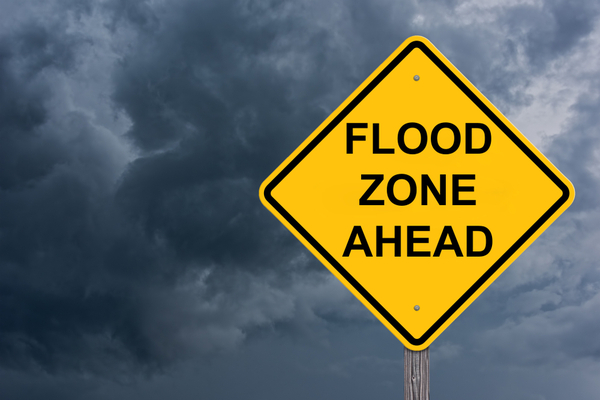Feels like half the country is drying up, and the other half is under water these days. If your home resides in the latter, you’re probably watching the creek/river/lake/ocean rise and wondering if you need to pack your bags. Maybe you don’t have much to worry about, or perhaps it’s time to be concerned. How do you know if your house is in a flood zone?
“Your first line of defense is to check out the (Federal Emergency Management Agency) flood maps,” says Harris Benson, a real estate agent with Douglas Elliman Texas, a real estate company. According to the FEMA website, “floods occur naturally and can happen almost anywhere. They may not even be near a body of water, although river and coastal flooding are two of the most common types. Heavy rains, poor drainage, and even nearby construction projects can put you at risk for flood damage. Flood maps are one tool that communities use to know which areas have the highest risk of flooding. FEMA maintains and updates data through flood maps and risk assessments.”
To search the FEMA flood map database, simply type in your street address, and you’ll soon know if you’re in a minimal risk area – or something much worse. FloodFactor.com, a tool devised by a New York-based flood research nonprofit called First Street Foundation, is also worth checking.
If you’re interested in buying a house in a zone with some level of flood risk, Benson says that you may want to obtain an “elevation certificate.” You can often get these documents from your city or county, and you may be able to download them from your local government’s website for free. “This is used to certify building elevations and determine your flood risk and the cost of your flood insurance. This document shows the location of the building, lowest floor elevation, building characteristics and flood zone,” Benson says. “Your insurance agent will use this to compare your building’s elevation to the base flood elevation shown on the flood map being used for rating and determine the cost to cover your flood risk.”
Finding out these answers can help guide your decision to buy (or not to buy) flood insurance. You may live in an area with a 1% chance of a flood and still feel as if it’s not a bad idea. That said, if you live in in a flood-prone neighborhood, that would seem to suggest that there’s a good argument that you should strongly consider buying it.
Earl Jones, owner of Earl L. Jones Insurance Agency in Sunnyvale, California, says the biggest provider (but not the only one) of flood insurance is FEMA’s National Flood Insurance Program. Jones says FEMA only offers a maximum of $250,000 to rebuild or repair your home and a maximum of $100,000 to replace personal property. “There are private flood insurance providers in the marketplace that will provide higher limits for coverage. Clients just need to ensure the private flood insurance provider meets their lender’s requirements of an S&P rating of A or higher,” Jones says.
—
Photo Credit: Jim Vallee / Shutterstock.com
